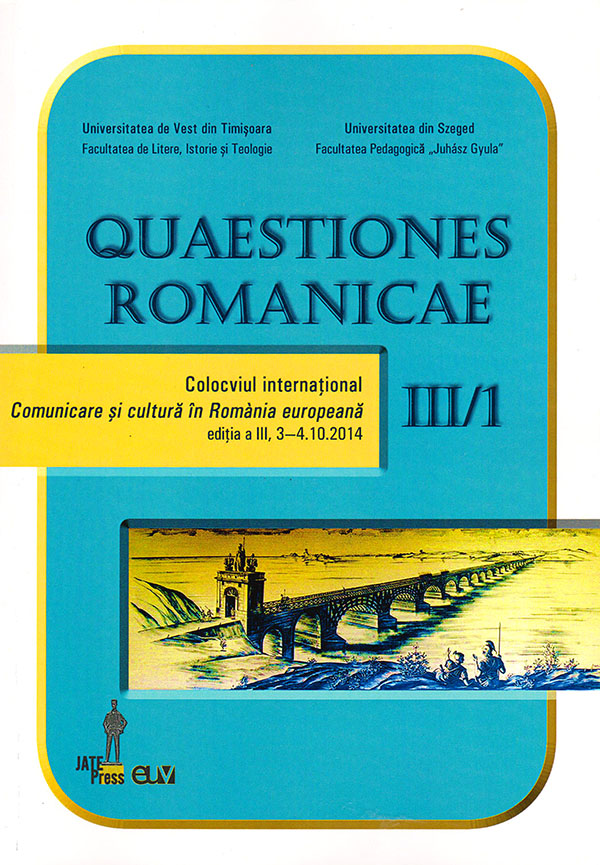Creativitate lexicală versus productivitate lexicală (cu referire la textul publicitar românesc actual)
Abstract: (Lexical Creativity versus Lexical Productivity – with reference to Contemporary Romanian advertising text) In lexical morphology studies, there is a tendency in setting a distinction between the two concepts of lexical creativity and lexical productivity, some of the word-formation processes being very productive whilst others giving rise to truly unique lexical creations, much less frequent and exclusively depending on the context in which they arise. As a result, we plan to follow whether there is, in sooth, any difference between these two phenomena, starting from the analysis of their results in language (i.e. new words and coinages). In support of the theoretical arguments, we will use examples selected from contemporary Romanian advertising texts (especially excerpts from written advertisements), as the language of advertising, following the artistic and the journalistic discourses, proves to be a very creative type of language, capable of producing original lexical forms, using usual or less known or explainable lexical processes. Taking into consideration our excerpts from a varied corpus, we will try to demonstrate that the two concepts (lexical creativity and lexical productivity) might overlap, as they sometimes base on the same lexical mechanisms even if they do not have the same results in the vocabulary of a language. A better description of the two could lead both to an optimal demarcation and to revealing new aspects regarding the word formation processes, which reinvent themselves constantly, as well as the current vocabulary. Many of these means of obtaining new words are truly surprising, yet little or even never discussed in the Romanian lexicology studies.
Keywords: lexical creativity, lexical productivity, lexical morphology, lexical innovation, advertising.
Rezumat: În studiile de ML, se încearcă tot mai mult delimitarea între conceptele CL și PL, unele procedee de formare de noi cuvinte fiind foarte productive, în timp ce altele dau naștere la creații lexicale cu adevărat inedite, însă mult mai puțin frecvente și dependente exclusiv de contextul în care se ivesc. În consecință, ne propunem să urmărim dacă întradevăr există o diferență între aceste fenomene, pornind de la analiza rezultatelor lor în planul limbajului (noi cuvinte și creații lexicale). În susținerea argumentelor de natură teoretică, ne vom folosi de exemple selectate din texte publicitare românești (fragmente de reclame, în mare parte în formă scrisă), întrucât limbajul publicitar, după cel artistic și cel jurnalistic, se dovedește a fi cel mai creativ tip de limbaj, capabil să producă forme lexicale inedite, folosindu-se de procedee obișnuite ori mai puțin cunoscute sau explicabile. În funcție de corpusul ales, vom încerca să demonstrăm că ambele concepte (CL, respectiv PL) se pot suprapune, întrucât uzează uneori de aceleași mecanisme, chiar dacă nu au aceleași rezultate la nivelul lexicului unei limbi. O mai bună descriere a celor două concepte ar putea conduce atât spre o delimitare cât mai precisă între ele, cât și spre depistarea de noi aspecte cu privire la procedeele de formare a cuvintelor, care se reinventează continuu, la fel ca și lexicul actual. Multe dintre aceste mijloace de obținere de noi cuvinte sunt cu adevărat surprinzătoare și, totuși, prea puțin sau chiar deloc discutate în studiile lexicologice românești.
Cuvinte-cheie: creativitate lexicală, productivitate lexicală, morfologie lexicală, inovație lexicală, publicitate.
